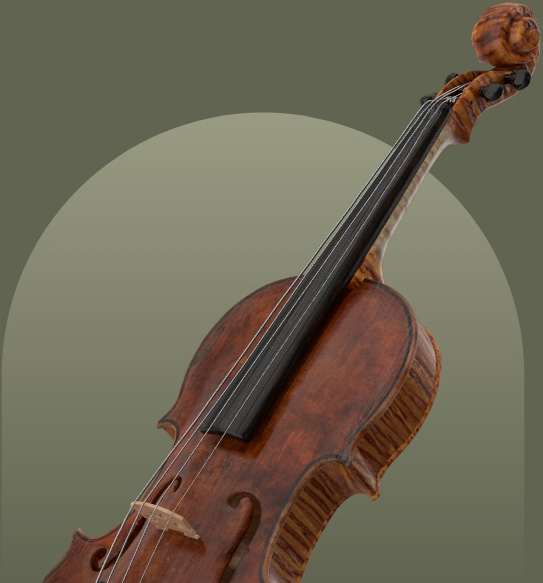Giorgio Gondolo
Auction price history
Highest auction price
£10,494
| Type | Details | Sold | Price |
|---|---|---|---|
| Violin | Turin, 1894 | Sun 1st May 2005 | £10,494 |
Maker Overview
Introduction
The name Antonio Stradivari resonates with musicians and collectors worldwide. Synonymous with unparalleled craftsmanship and exquisite sound, Stradivari’s violins are not merely instruments; they are works of art, historical artifacts, and objects of intense fascination. But who was Antonio Stradivari, and what made his creations so extraordinary? This blog post delves into the life and work of this legendary Cremonese violin maker, exploring his techniques, innovations, and the enduring legacy he left behind.
Early Life and Apprenticeship:
Despite extensive research, the early life of Antonio Stradivari remains shrouded in some mystery. Born around 1644 in Cremona, Italy, his origins are not definitively known. The first documented record of him appears in 1667, concerning his marriage to Francesca Ferraboschi. While the exact nature of his training is debated, the prevailing theory suggests he was a pupil of Nicolò Amati, a prominent figure in Cremonese violin making. A label found on an early Stradivari violin reads “Antonius Stradiuarius Cremonensis Alumnus / Nicolaij Amati Faciebat 1666,” which translates to “Antonio Stradivari of Cremona, student of Nicolò Amati, made in 1666.” This label, though rare, confirms his Cremonese origins and hints at a connection to the Amati workshop. However, census records listing Amati’s students do not include Stradivari’s name, leaving room for speculation.
Innovation and Experimentation
Regardless of his initial training, Antonio Stradivari quickly distinguished himself through his originality and experimental approach. Unlike his contemporaries who largely adhered to established Amati patterns, Stradivari dared to venture beyond the conventional. He was far more painstaking in the accuracy and finish of the interior structure than any of his predecessors. One of his earliest innovations was the “long pattern” violin, an elegant design that extended the body length from the usual 35.4cm to over 36cm. He focused on this form from approximately 1690 to 1700.
The “Golden Period”: A Pinnacle of Craftsmanship:
Around 1700, a dramatic shift occurred in Stradivari’s work, marking the beginning of his renowned “golden period.” This era, lasting roughly from 1700 to the 1720s, saw the creation of some of his most celebrated instruments. The reasons behind this transformation are unclear, though some speculate that personal events, such as the death of his first wife and subsequent remarriage, may have played a role. During this period, Stradivari refined his designs, experimented with varnish formulas, and achieved an unparalleled level of tonal quality and aesthetic beauty.
Family and Workshop:
Antonio Stradivari’s legacy extended beyond his own hands. He established a thriving workshop where he trained his sons, Francesco and Omobono, who continued his craft after his death in 1737. Francesco, the eldest son, is believed to have been his father’s chosen successor. Distinguishing the work of Francesco from that of Antonio can be challenging, although subtle differences in soundhole settings have been observed. Francesco’s handwriting has also been identified on some of the later Stradivari paper patterns, suggesting his increasing independence within the workshop. Some instruments bear labels indicating they were made “sotto la Disciplina d’Antonio Stradiuari” (under the guidance of Antonio Stradivari), though these are rare.
Beyond Violins: Guitars and Decorative Arts:
While primarily known for his violins, Antonio Stradivari also crafted other instruments, including guitars and mandolins. Interestingly, these instruments, traditionally known for elaborate decoration, were relatively plain compared to the work of other Cremonese makers. Stradivari’s focus remained on the precision and quality of the woodworking itself. He took immense pride in his technical application, evident in the meticulous detail of his instruments.
The Enduring Allure of Stradivari:
The violins of Antonio Stradivari continue to captivate musicians, collectors, and researchers centuries after their creation. Their exceptional sound quality, exquisite craftsmanship, and historical significance make them highly sought-after and valuable instruments. The secrets behind Stradivari’s success remain a subject of ongoing investigation, with researchers exploring everything from the wood he used to the composition of his varnish. Regardless of the specific factors, the enduring legacy of Antonio Stradivari as the greatest violin maker of all time is undeniable. His instruments stand as a testament to the power of innovation, dedication, and artistic vision.
Biographies
John Dilworth
GONDOLO, Giorgio Born 1828, died 1912 Turin Italy. Possibly a pupil of Melegari. Pressenda style work with red varnish. Work presently unknown.
Sell your instrument with Amati
Get started by uploading photos of your instrument for our experts to review.
